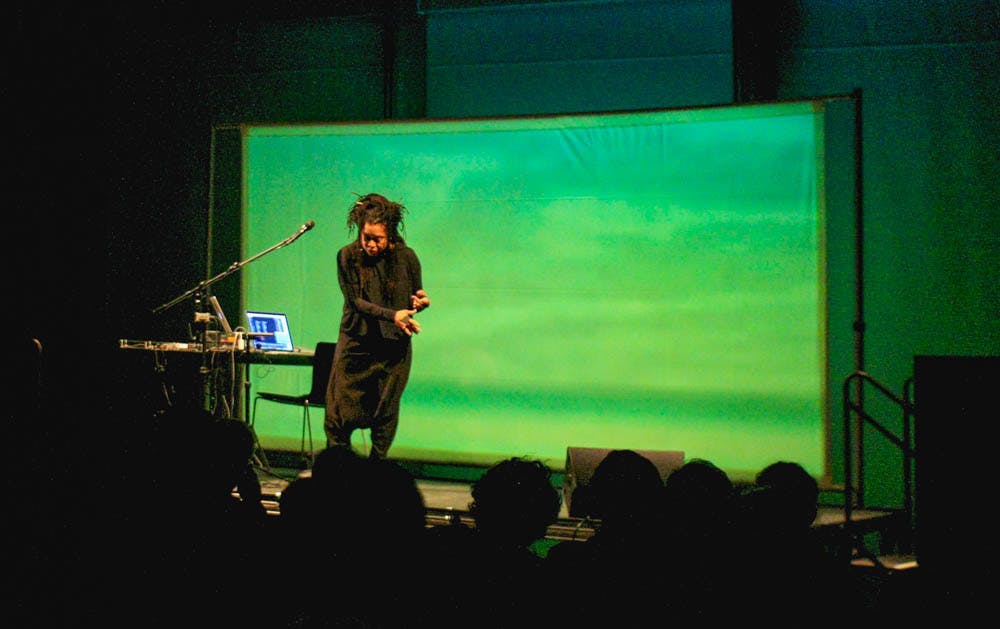Pamela Z — and yes, that is her real last name —is known for her multilayered compositions that fuse eerie, futuristic audio with spoken word and film. The globally lauded composer and multimedia artist successfully simulated the clamor and quiet of human experience during her performance in Studio 1 of the Granoff Center for the Creative Arts on Friday.
Before Z even graced the stage, the sheer quantity of high-tech equipment in the room augured an extraordinary experience for audience members. Microphones, motion sensors, surround-sound speakers and a projector screen were connected by a tangle of wires that all ultimately snaked back to Z’s MacBook Pro — where the magic really happened. Using a voice altering software program called MAX MSPE, Z toyed with her own vocals in real time throughout the whole of the performance — a complicated process that distinguishes her work from that of similar artists.
Z greeted the audience in a neofuturistic, all-black ensemble — the kind of outfit someone might wear to an important cocktail event on the moon. When she faced the audience, her smile glowed bright with benevolence, and when she approached the microphone, the room quite literally began to tremble.
Z’s performance was a powerfully visceral experience. A master of technology on the cutting edge of audio composition, she didn’t just mix sounds — she summoned them. The audience sat transfixed as Z roused tinny staccatos from distant speakers with the flick of a wrist and manipulated motion sensors with the careful intention of a snake charmer. Each of her movements worked to create a more dynamic multimedia experience.
In one composition, Z attached motion sensors to her hands and, standing in front of a projected “ocean,” enacted the feeling of drowning — effectively capturing the fear of being lost in translation. In a later piece, she began by crinkling bubble wrap into the microphone, a sound that then framed a wide spectrum of whispers, echoes and pulsing, operatic scales. At the end of the piece, Z approached the microphone and sensuously whispered two words: “secret code” — a detail that probably should’ve made people laugh, but didn’t.
In another instance, Z’s art took a deliberate turn for the humorous. Blurry typewriter keys tumbled across the screen behind the stage as she whispered “Dear Pen Pal” over the sharp sound of clacking keys. In distinctive robotic fashion, she began to repeat, “I do hope I get my Mac back soon, un-til then, you prob-ab-ly won’t hear from me too of-ten.”
Anyone else who attempted to similarly parody the digital age would likely be dismissed as trite. Yet there’s something about Z’s clear mastery of her craft — coupled with her generous and periodically unserious disposition — that redeems her occasionally cringe-worthy content. When she finished performing her final piece, the entire audience rose to a sixty-second standing ovation — the kind that’s usually reserved for Beyoncé or magicians who escape tiny cages suspended from terrifying heights. Her craft was unique and otherworldly, and for that she deserves unending applause.





